Primary Care: Assessing Patients with Higher Breast Cancer Risk
The USPSTF recommends primary care physicians use validated familial risk assessment tools before referring patients for genetic counseling and...

The U.S. Preventive Services Task Force (USPSTF) recently updated its recommendations to include more women for BRCA screening. Receiving less attention from that announcement was the recommendation that primary care providers should use validated risk assessment tools before referring patients for genetic counseling.
We covered the insights and implications from this news in a previous blog post. We also concluded that, though expanding risk assessment to a broader set of women may present challenges, these new recommendations continue to validate the utility of genetic information in routine preventive care. As such, any set of challenges that arise are worth tackling.
In this post, we explore at greater length how primary care physicians leverage technology to address key challenges to providing risk assessment in routine medical care, including:
The USPSTF recommends primary care physicians use one of these seven validated tools to guide referrals to genetic counseling:
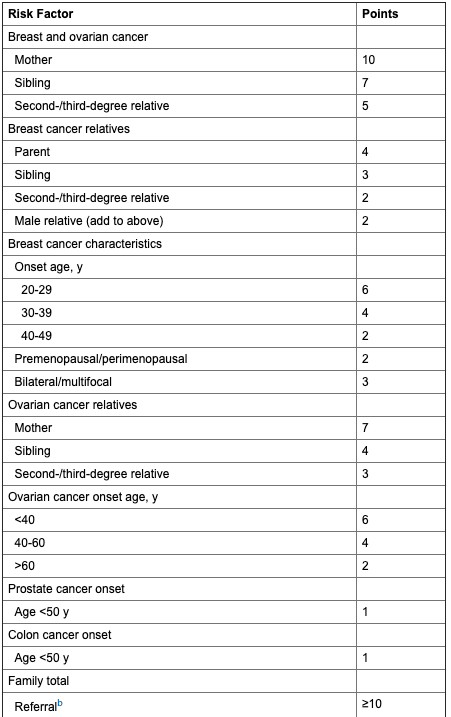
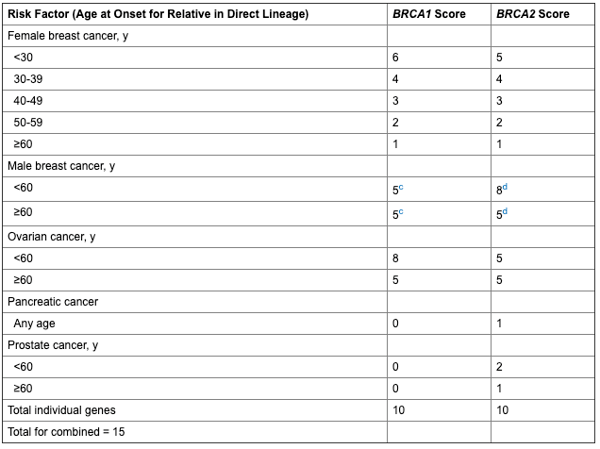
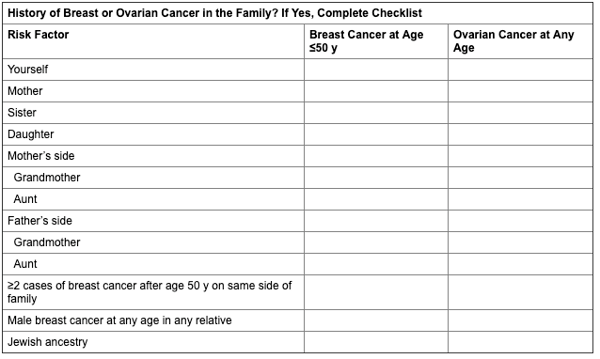
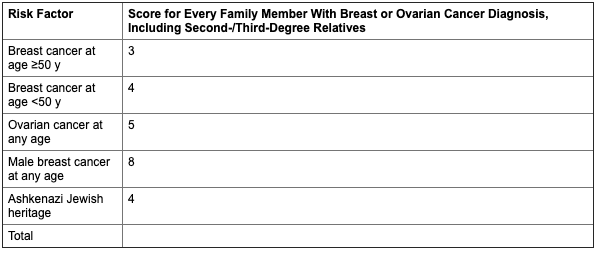

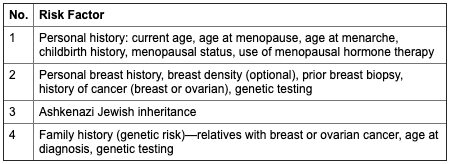
Though these tools may be validated, they do not fix a glaring challenge - that is, patient usability. Most risk assessment programs will administer these questions to the patient via paper intake forms - which are prone to human error, cumbersome, and not user friendly. Therefore, you run the risk of receiving low-quality data, and the quality of the risk assessment is only as strong as the quality of data received. If the validated tool isn't user friendly - a la the seven aforementioned tools - you likely won't get the patient's full personal and family history.
This problem was highlighted in recent study results presented at the 2019 American Society of Clinical Oncology (ASCO) Annual Meeting. Researchers found that less than half of patients (46.7 percent) with breast cancer provided sufficient family history necessary to accurately predict risk. The results underscored the need to optimize patient-facing reporting.
“If you don't have a complete family history, it's not possible to run an accurate risk assessment. It really makes it important to have a good family history captured in the electronic health record,” said one of the study's authors.
In an Oncology Nursing News interview, the study's author emphasized the role of nurse practitioners and providers in educating patients on the importance of completing the family history, and that the main goal should be to automate this process. "[We want to] run risk assessment in the background of the electronic health record so that patients who are at high risk can be flagged and receive the genetic counseling or the genetics referral that can help address where they are at - an increased genetic risk."
This is why health systems are turning to patient-centered digital risk assessment tools. According to a Health Data Management report, one Kankakee, Illinois-based breast center migrated from paper intake forms to a digital risk assessment tool that automatically flags patients who are eligible for genetic counseling and testing. In doing so, the center nearly doubled the number of high-risk patients identified for MRI surveillance.
Related article: Providers: 3 Ways to Take Your Risk Assessment Program From Good to Great
According to the National Society of Genetic Counselors' (NSGC) latest professional status survey, there are fewer than 700 cancer-specific genetic counselors nationwide - making genetics expertise a scarce resource.
This shortage can make the referral pathway to genetics tenuous, and has shown to create unintended disparities in testing rates across ethnic groups. For example, a 2017 study showed that, when referred out to a genetic counselor, patients from minority groups (e.g., African American, Latino) had higher cancellation rates compared to caucasian patients.
"Genetic counselors are in very high demand, and unfortunately there are not many of them around," said the director of oncology services at UnityPoint Health in an mHealthIntelligence interview.
That's why the Iowa-based health system adopted a telehealth genetic counseling model. Via the CancerIQ risk assessment and patient management technology, providers can use the integrated telehealth genetic counseling offering to supplement their existing genetic counseling team, or as a full service solution if their resources are limited. (Counseling sessions can occur pre-testing, post-testing, or both.) The telehealth genetic counselors have direct access to the patient record through the platform and build on the early workup that was done in clinic to make their counseling sessions more meaningful and efficient. The program has found initial success, and the system plans to expand into another hospital, including OB/GYN and primary care.
We've covered how patient usability is important to streamline the patient family history data collection process, as well as how telehealth genetic counseling helps mitigate the shortage of genetics experts. But one key challenge remains - that is, securing the internal information technology (IT) resources necessary to integrate your validated familial risk assessment tool and genetic counseling and testing results into the electronic medical record (EMR).
In the last part of this post, we explore at greater length how primary care providers are overcoming this specific IT hurdle in three steps. We also cover what providers are doing, why it is relevant to you now, and how it was done.
What was done: Adopt a digital risk assessment and patient management tool without an initial EMR integration.
Why it's relevant: By implementing a cloud-based solution without an initial EMR integration, you can impact your patients immediately - especially those who will be looking to get mammograms this fall.
How it has been done: One Peoria, Illinois-based health system offers risk assessment as a patient educational tool. The system sends personalized follow-up emails that provide each patient the educational and support materials they need based on their individual genetic risk factors.
At one Seattle-based health system, after patients fill out the digital family history questionnaire, staff print out the intake form and use it just like any other intake form is used. The only difference is that staff are seeing a neatly printed form, not messy handwriting.
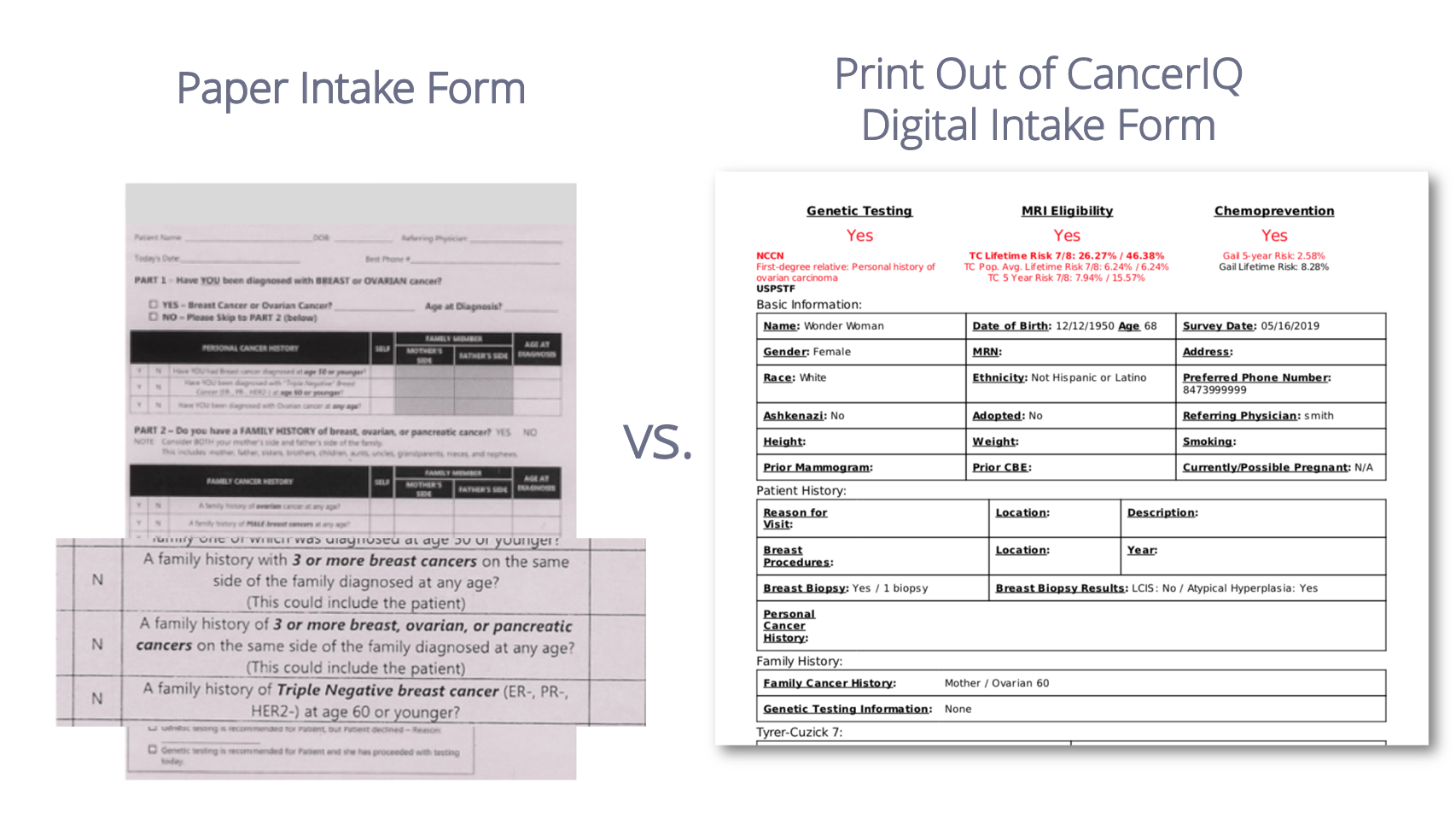
What was done: Use the results from your initial implementation to make the case for integration.
Why it's relevant: Because integration may require major internal IT resources, your software request likely must be prioritized amongst a queue of other projects for the month, quarter, or year. Therefore, it's crucial to have the clinical and financial justification to make your technology requests a priority.
How it has been done: Our Peoria-based client started tracking the number of patients who should've underwent MRI but instead underwent mammograms, due to ineffectively collecting patient family history on paper. Financially, health systems can earn more than double the revenue from MRIs than from mammograms, according to the Advisory Board. Below, you can see how missing patients impacted the system's return on investment (ROI) in terms of missed opportunities for genetic counseling and preventive MRIs.
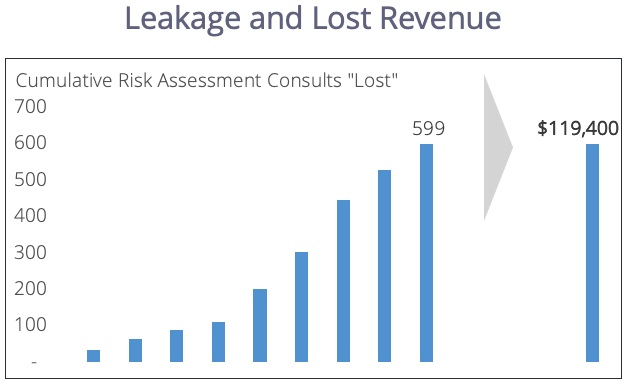
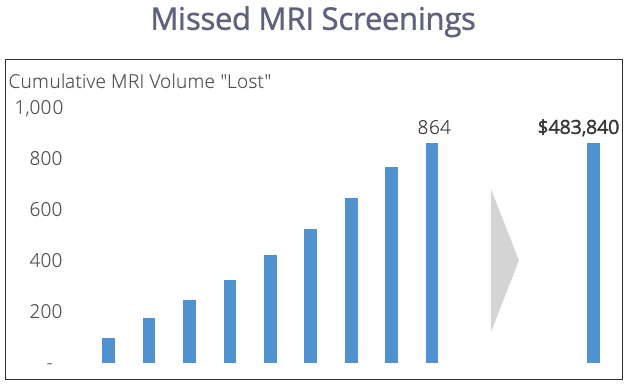
What was done: Design the integration pathway that is tailored to your institution.
Why it's relevant: Adding cancer risk assessment into routine care is not a cookie cutter process. For instance, we can't assume that:
Because IT teams are generally understaffed, you want to know what you are building before you build it. Starting with a standalone digital risk assessment tool will help you identify the right way to integrate with the EMR, help you map out the correct workflow, and help you see how users use the system. By knowing this information in advance, you can build something that you know will work for you.
How it has been done: Based on your initial implementation of a familial risk assessment tool, you can use that data to optimize your EMR workflow. For example, at CancerIQ we have three phases to EMR integration:
For illustrative sake, we'll explore the document integration, which is beneficial to sites that have a standard process for scanning CancerIQ documents into their EMR. Many sites use the intake form as the trigger to discuss genetics and document if a patient wishes to move forward. This document gets scanned into the EMR to record the patient's responses, risk, and decision - eliminating the need to manually scan each file into the EMR. With this integration, sites can also automatically transfer the completed genetic counseling paper work into the EMR (e.g., test request form (TRF), consultation notes, prior authorization insurance forms, patient pedigree, etc.).
At one West Coast-based health system using a Cerner EMR, the intake form, TRF, patient pedigree, and other documents are manually scanned into the EMR. Knowing this prior to integrating our digital risk assessment solution, we now know that a document integration will fulfill the needs at this specific site.
Regardless of your situation, we believe in a partnership approach to solving industry challenges. If you share our mission to predict, preempt, and prevent hereditary cancers, you likely want to get started and screen your patients while you have their attention this fall during breast cancer awareness month. If this is the case, and you want to get started, reach out to us. Let's start a conversation to explore how you can start, run, and grow your cancer screening in routine care.
The USPSTF recommends primary care physicians use validated familial risk assessment tools before referring patients for genetic counseling and...
Scale the cancer risk assessment program to identify more high-risk patients, increase service capacity, and manage care over time.
Make a good risk assessment program great using smarter assessment tools and leveraging genetics-trained clinicians.
CancerIQ is proud to offer precision prevention news and learning opportunities to our clinical champion community. You don't have to be our customer to take advantage – subscribe to receive the content you care about.